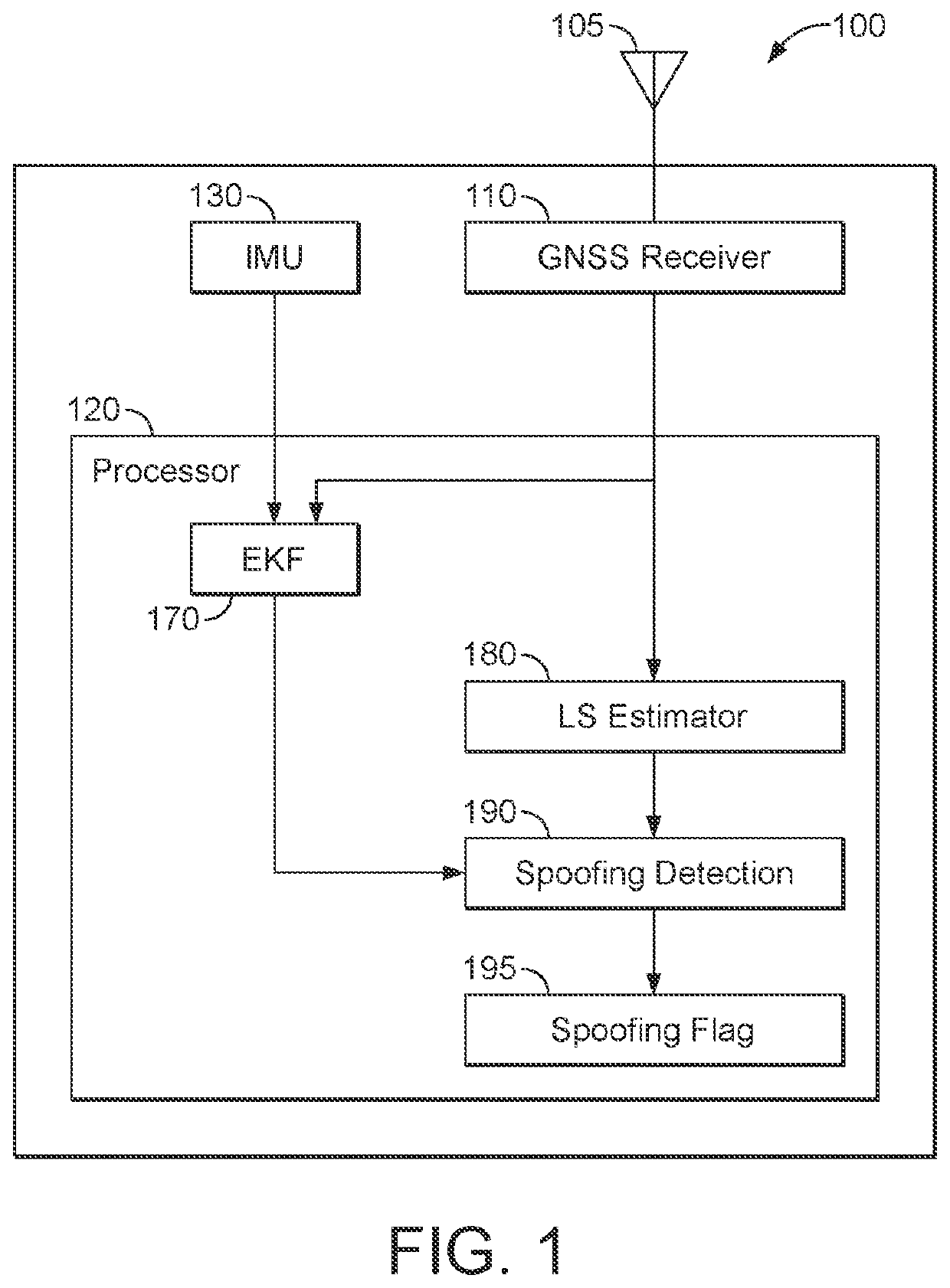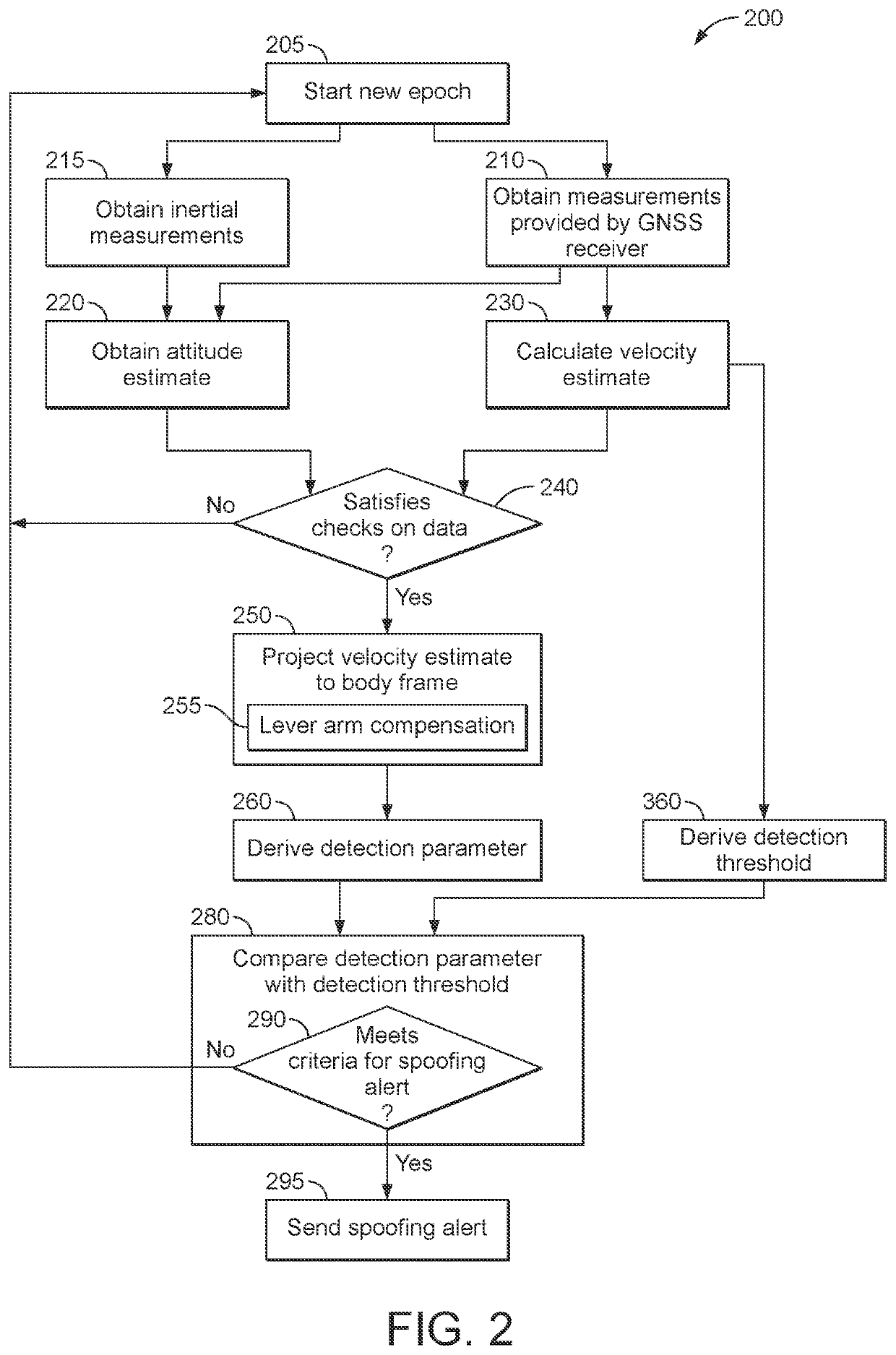Spoofing detection for vehicle-based GNSS receivers
a receiver and vehicle-based technology, applied in satellite radio beaconing, measurement devices, instruments, etc., can solve the problems of different (false) position fix, significant affecting the reliability of systems that require accurate position/velocity measurements, and inaccurate position estimates are known problems
- Summary
- Abstract
- Description
- Claims
- Application Information
AI Technical Summary
Benefits of technology
Problems solved by technology
Method used
Image
Examples
Embodiment Construction
[0077]Reference will now be made in detail to embodiments of the invention, examples of which are illustrated in the accompanying drawings. The described embodiments should not be construed as being limited to the descriptions given in this section; the embodiments may have different forms. In the embodiments below, a method for detecting GNSS spoofing for a GNSS receiver in a vehicle, and a GNSS receiver module for a vehicle configured to carry out the method, shall be described.
[0078]FIG. 1 shows a block diagram of a GNSS receiver module 100 according to an example. The GNSS receiver module may be used in various vehicle devices, as part of a navigation system, a vehicle tracker, or a toll tag, for example.
[0079]As shown in FIG. 1, the GNSS receiver module comprises a GNSS receiver 110, and a processor 120 configured to carry out a method for detecting GNSS spoofing. In some embodiments, the processor may be part of the GNSS receiver, but in the example shown in FIG. 1, it is illu...
PUM
 Login to View More
Login to View More Abstract
Description
Claims
Application Information
 Login to View More
Login to View More - R&D Engineer
- R&D Manager
- IP Professional
- Industry Leading Data Capabilities
- Powerful AI technology
- Patent DNA Extraction
Browse by: Latest US Patents, China's latest patents, Technical Efficacy Thesaurus, Application Domain, Technology Topic, Popular Technical Reports.
© 2024 PatSnap. All rights reserved.Legal|Privacy policy|Modern Slavery Act Transparency Statement|Sitemap|About US| Contact US: help@patsnap.com










